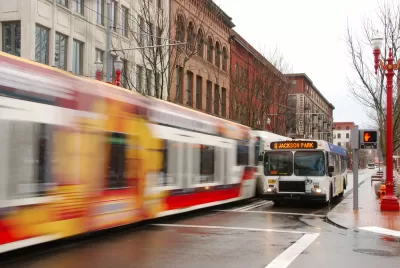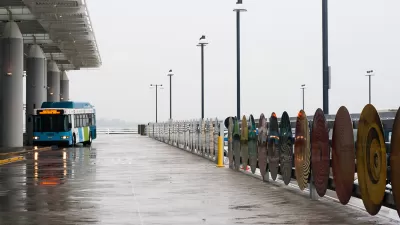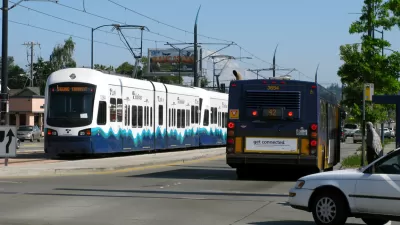Seattle Transit blog compares rail investments from five cities around the country.

Zach Shaner compares the transit planning in various cities around the country. Starting by comparing the cost of Seattle's current and planned transit investments under ST2 and ST3 with Portland's existing MAX Blue Line. To make the big point of the article Shaner uses a word some might consider inappropriate, so beware:
We frequently wonder around here [in Seattle] why our transit-building schemes are slow and expensive, and I’ve offered my best attempt at the process side of the equation already. But today I want to propose another reason: to put it bluntly, we’re building the good shit and nobody else is.
Shaner is echoing the arguments of an article by Angie Schmitt from May, which parsed the specifics of the lowest performing rail transit lines in the country. Shaner's approach differs slightly, comparing the complete rail portfolio of the cities making rail transit investments and finding examples of success as well. The article compares the transit systems of Dallas, Denver, Portland, Los Angeles, Minneapolis, and Seattle (the latter is considered as built in 2023) on the metrics of frequency, capacity, grade separation. The comparison reveals that neither all transit systems nor all transit investments are created equally—and as such, they can't be expected to deliver the same results.
FULL STORY: Seattle is the Tortoise, Portland the Hare

Study: Maui’s Plan to Convert Vacation Rentals to Long-Term Housing Could Cause Nearly $1 Billion Economic Loss
The plan would reduce visitor accommodation by 25,% resulting in 1,900 jobs lost.

North Texas Transit Leaders Tout Benefits of TOD for Growing Region
At a summit focused on transit-oriented development, policymakers discussed how North Texas’ expanded light rail system can serve as a tool for economic growth.

Why Should We Subsidize Public Transportation?
Many public transit agencies face financial stress due to rising costs, declining fare revenue, and declining subsidies. Transit advocates must provide a strong business case for increasing public transit funding.

How to Make US Trains Faster
Changes to boarding platforms and a switch to electric trains could improve U.S. passenger rail service without the added cost of high-speed rail.

Columbia’s Revitalized ‘Loop’ Is a Hub for Local Entrepreneurs
A focus on small businesses is helping a commercial corridor in Columbia, Missouri thrive.

Invasive Insect Threatens Minnesota’s Ash Forests
The Emerald Ash Borer is a rapidly spreading invasive pest threatening Minnesota’s ash trees, and homeowners are encouraged to plant diverse replacement species, avoid moving ash firewood, and monitor for signs of infestation.
Urban Design for Planners 1: Software Tools
This six-course series explores essential urban design concepts using open source software and equips planners with the tools they need to participate fully in the urban design process.
Planning for Universal Design
Learn the tools for implementing Universal Design in planning regulations.
Ascent Environmental
Borough of Carlisle
Institute for Housing and Urban Development Studies (IHS)
City of Grandview
Harvard GSD Executive Education
Toledo-Lucas County Plan Commissions
Salt Lake City
NYU Wagner Graduate School of Public Service





























